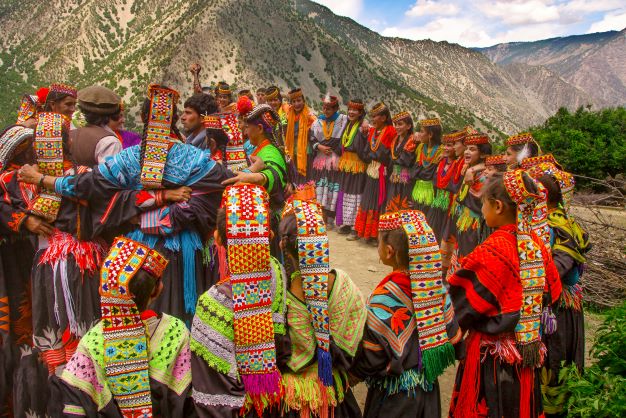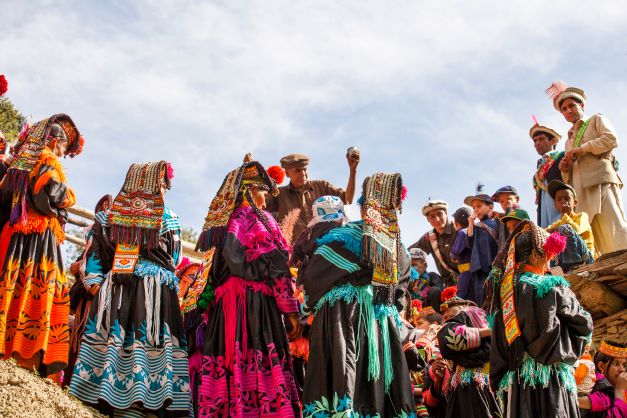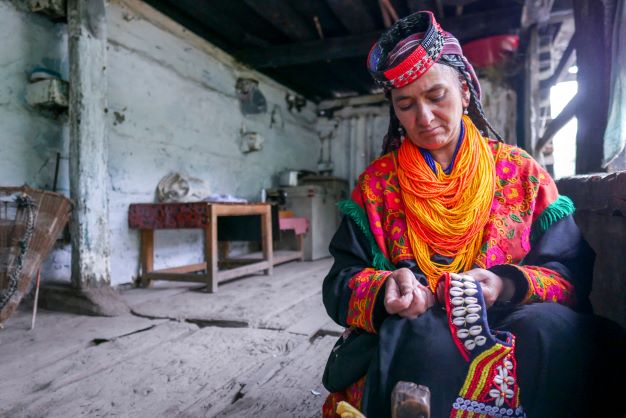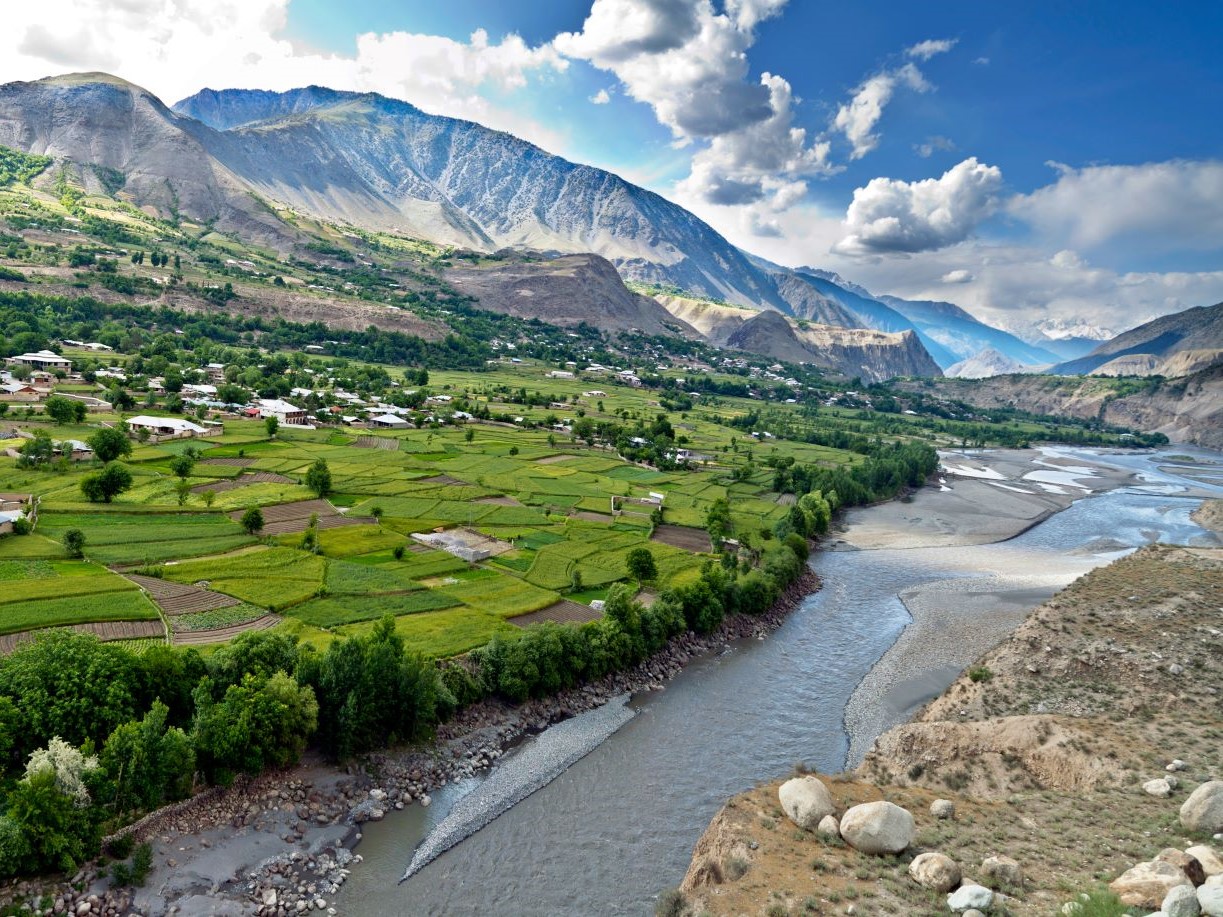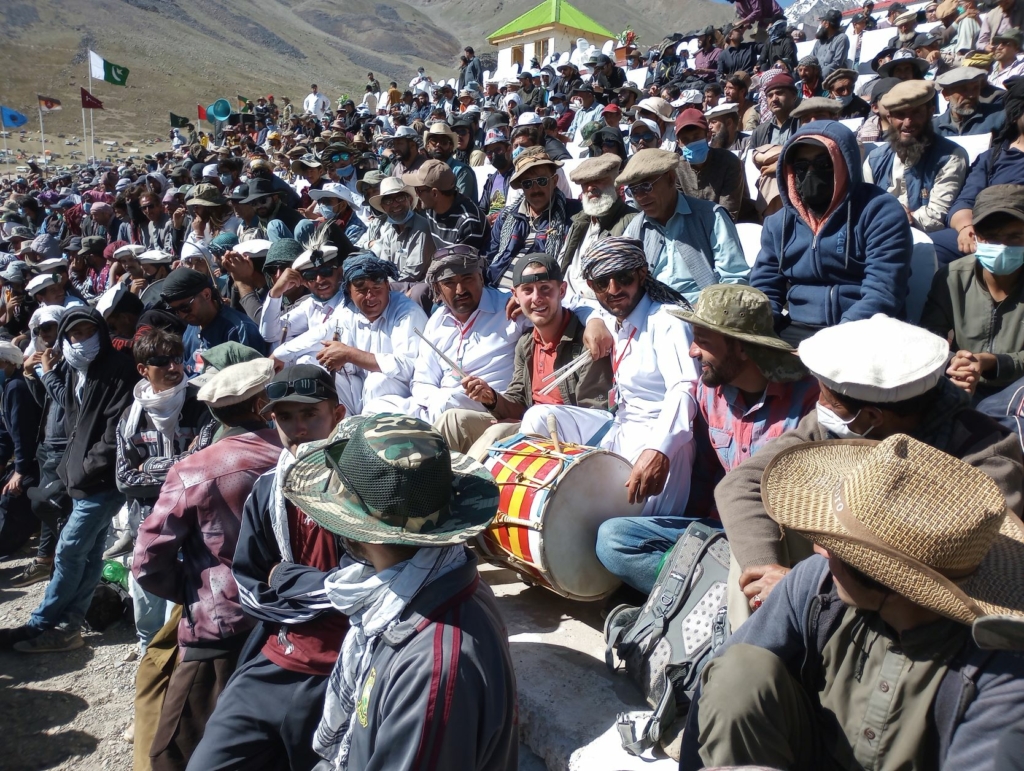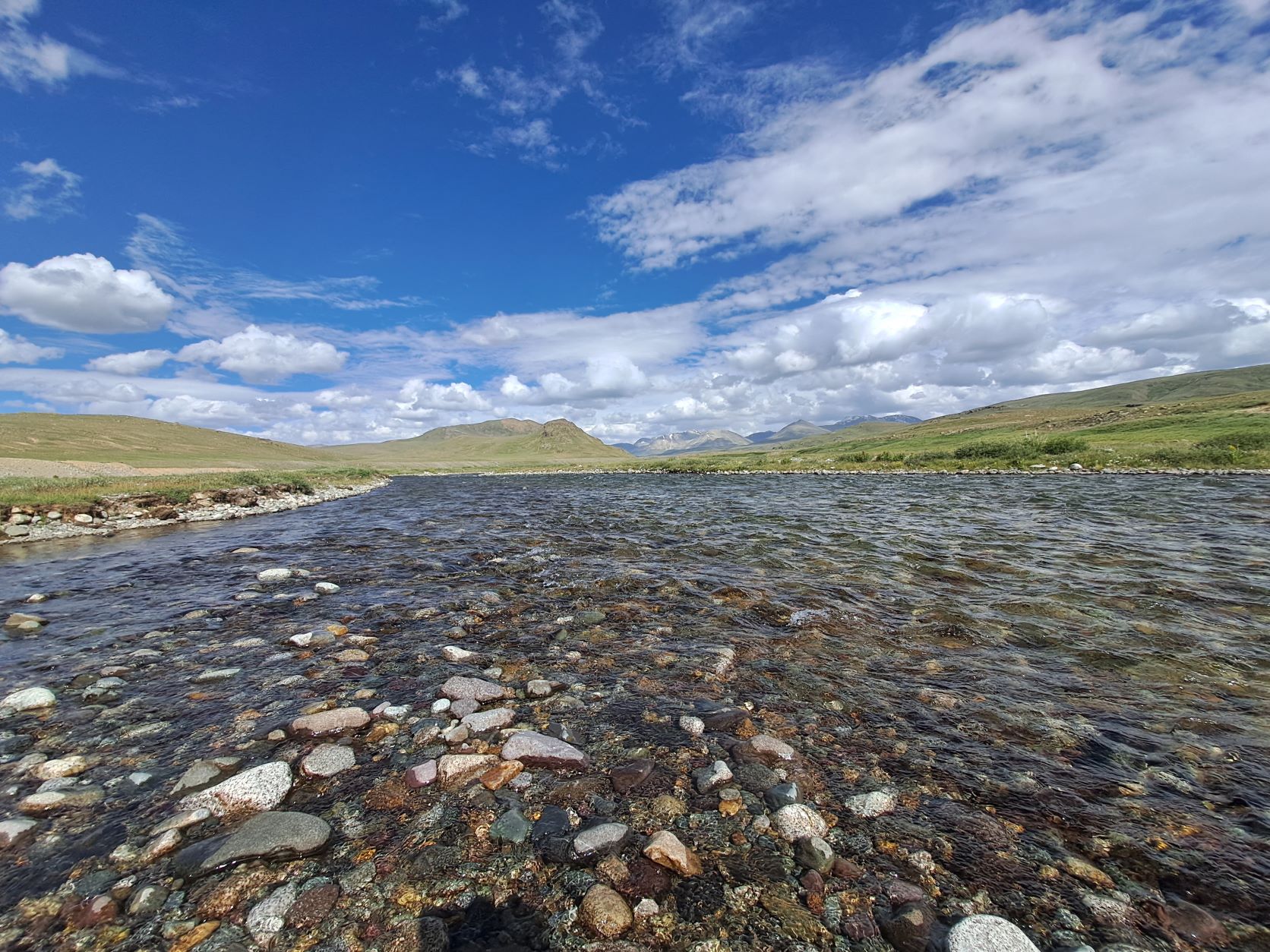The world can be a dry place of busyness, stress, and anxiety longing for an oasis to fill the air with fresh colors, panache festivals, and heartwarming people. At Kalash Valley in Chitral, Pakistan, a small ethnic minority group known as the Kalasha have a population ranging humbly to only a few thousand people. The Kalash people celebrate in their festivals the end of seasons and the beginnings of the next ones and infants reaching their first year of age to commemorate the beginning of the rest of their lives. In the Kalash Valley, the cooling river and high elevation in a hot country like Pakistan provide warm Summers perfect for traveling for an extended period. Kalash Valley is a place to go to explore celebratory festivals, vibrant people, and beautiful nature.
The Kalasha people stand unique among neighboring cities with their own customs, festivals, and religion. The primary languages spoken in Kalash Valley are Kalasha and Khowar, however, there are English speakers living there as well. The Kalasha women stand apart by often wearing long black robes embroidered with cowrie shells while men wear the common Pakistani shalwar kameez. Children wear smaller-sized versions of adult clothing after turning four years old. Contrary to Pakistani customs, the Kalash Valley culture encourages socialization between males and females allowing contact among each other to be common practice. The age of adulthood varies around the globe, in Kalash Valley, girls enter womanhood when they turn four or five years old and are typically married at ages fourteen or fifteen. These customs and many more provide insight into Kalash Valley culture and provoke a new set of eyes on how to view the dynamic adventure of life.
The way of life in the Kalash Valley culture changes the priority of intrinsic values, including the celebration of new seasons! There are three major festivals celebrated in Kalash Valley, including Chilam Joshi in mid-May, the Uchau in the Fall, and the Caumus in midwinter. The Kalasha believe in many gods. One god in particular is Soriza, god of the pastors, who is celebrated and thanked at the Caumus festival for protecting the livestock in the Winter. While the god Goshidai protects the livestock until the Pul Festival taking place at the full moon in September. Goshidai is celebrated and given thanks at the Joshi festival in Spring. Celebrating the arrival of Summer and abundance of dairy products, the Joshi Festival is celebrated at the end of May annually. The beginning of the Joshi Festival starts off with “Milk Day”, a day when the Kalasha drink milk and give milk offerings that have been saved for ten days prior to the festival.
The most important festival is the Chawmos, celebrated for a long two weeks at the winter solstice from December 7th – 22nd. To end the fieldwork and harvest season, the Chawmos Festival celebrates by involving music, dancing, and goats slaughtered for a great feast. The goats killed are dedicated to the god Balimain who visits from the mythical homeland called Tsiyam for the entirety of the feast. This sacred event only allows exclusive people who are deemed pure and initiated. The purification ritual consists of waving a fire brand over women and children. Men are initiated by a shaman waving lit juniper brands over them.
These sacred rituals commencing the beginning of the festival signify the ‘old rules’ of the gods are no longer in force. After the rituals, the men are then separated into two groups: pure and impure. The ceremonially pure men sing prestigious songs while the impure sing obscene, wild, and passionate songs that are melodically different. The songs are accompanied by a “switch in gender” where the women dress up as men and the men dress up as women. This then commences a sequence of symbolic activities to illustrate the mythical story of the deity Mahandeu cheating Balumain of superiority. At a certain point when the story is illustrated through many interactive festival performances, Balumain showers all his blessings on seven young boys which passes on to all pure men. Balumain was only visible in his first visit many years ago and is now just felt to be present. The festivals celebrated in Kalash Valley culture can be seen as rites of passages to the next solstice season.
The religious practice of the Kalash people is closely related to Hinduism and a form of Buddhism where there are many gods and spirits. Even though the Kalash Valley cultural practices are related to Hinduism and Buddhism there are many types of different rituals carried out in day-to-day life. The rituals bring economic well-being and are gift-giving festivals. Throughout Kalash Valley lie many altars and shrines built for numerous gods and goddesses who are frequently brought goat sacrifices. Ancestors who have passed away long ago are believed to have come back reincarnated in crows and are fed by the locals with their left hand typically around tombs. In most cultures, when a person dies there is a time for mourning and grieving including a funeral where the dead body is buried underground. The Kalasha people have a contrary perspective of death often celebrated when a person dies. They believe the soul of a person longs to leave the body to be reunited with other already departed souls. A funeral of a fallen Kalashi is not mourned with tears but is celebrated with dancing and singing for the departure of the person’s soul.
With such interesting cultural and religious practices, many are left wondering where did it all start? The Kalash people are believed to be originally from Asia with their ancestors before migrating to Afghanistan. A common folklore song sung by the Kalashi people speaks about a place called “Tsiyam” located in South Asia. According to many Kalash traditions, the Kalashi are referred to as refugees or migrants. The Rais Dynasty of Chitral formed by Shah Nadir Rais carried out an attack against the Kalash people for the land of Southern Chitral. This caused the Kalashi to face many massacres and harsh persecution afterwards ultimately leading them to flee Chitral Valley. Those who stayed behind paid a tribute or fee for their faith because of disagreements among neighboring beliefs.
The Kalash from the 18th century onward enjoyed a peaceful relationship with the Kho who are Sunni and Islami Muslims. There were many religions and ethnicities in Chitral who were ensured peace and safety by the government to practice their beliefs for a time. Missionaries were not even allowed to enter Kalash for the security of their beliefs. After a time of peace, Nuristani, a neighbor West of the Afghanistan border, was converted by an oppressive leader. Kalash Valley was even originally made up of five valleys before the 1940s which included Jinjeret and Urtson. There are only three valleys remaining today and are Bumburet, Rumbur, and Birir. There are many cultural threats invading Kalash traditions such as NGOs and outsiders attempting to change or stop ancient practices. Over the past century, the non-Muslim Kalasha have seen their numbers shrink from 200,000 to 3,000-4,000 people stemming from the custom that if a member converts to Islam they cannot live in Kalash any longer.
A pinnacle reason the Kalash people stay in Kalash Valley despite religious hardships is for the majestic and abundant natural environment around them. Surrounded by three isolated mountain valleys known as Bumburet, Rumbur, and Birir, the Kalash Valley people enjoy the fruits of fertile agriculture, a blanket of rich oak trees covering the mountain sides, and a river providing sustainable streams of water for agriculture. The locals enjoy fresh foods grown locally in mineral rich soil such as wheat, maize, grapes, apples, apricots, and walnuts. In the Kalash Valley, the combination of local bodies of water and high elevation provides an average maximum temperature between 73 and 81 degrees Fahrenheit in the Summer while the Winter average minimum temperatures range between 36 and 34 degrees Fahrenheit.
The Kalash Valley culture is one of the most intriguing and spiritual experiences in the world. The thrill and rush of the unique festivals, lively people, and dream-like sceneries makes Kalash Valley one of the most attractive tourist destinations in Pakistan. The festivals may be an abstract experience unlike anything else that make Kalash Valley culture like a cold glass of water in the heat bringing life for anyone who comes. The population of the Kalashi have dwindled over the years calling tourists to action! The economic support coming from travelers visiting Kalash Valley attributes to the sustainability of the Kalashi. To experience this captivating valley for yourself be sure to check out the Kalash and Hunza Valley itinerary.
